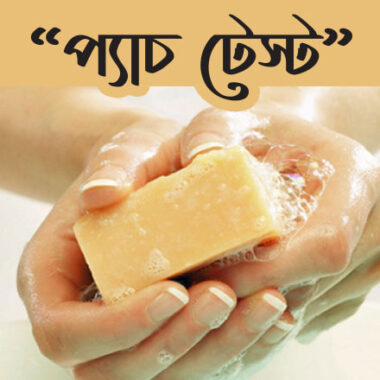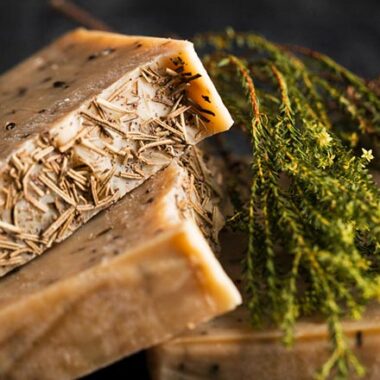If you’ve ever wondered how handmade soaps are crafted with love and care — the kind that smells like nature and feels like luxury — you’re about to discover the secret. It’s called the cold process soap making method, a centuries-old technique that allows soap makers to create rich, nourishing bars with full control over ingredients.
In this blog, we’ll walk you through the entire cold process soap making process, step-by-step — so you understand what goes into each bar and why this method is a favorite among artisan soap creators and natural skincare lovers.
🌿 What is Cold Process Soap?
Cold process soap is made by mixing natural oils or butters with sodium hydroxide (lye), which triggers a chemical reaction called saponification. This process transforms the oils into soap and glycerin — a natural humectant that helps retain moisture in your skin.
Unlike hot process soap, cold process soap is made without cooking or external heat, preserving the full benefits of the ingredients. It also requires a curing period of 4–6 weeks to become firm and mild.
🔬 Ingredients You’ll Need
Here’s a basic list of ingredients used in cold process soap making:
-
Oils and Butters: Olive oil, coconut oil, shea butter, castor oil
-
Lye (Sodium Hydroxide): Essential for saponification
-
Distilled Water: To dissolve the lye
-
Essential Oils: For natural fragrance (lavender, peppermint, tea tree)
-
Colorants: Natural clays, herbs, or mica powders
-
Add-ins: Oatmeal, dried flowers, charcoal, honey, etc.
🛠️ Cold Process Soap Making Steps
Step 1: Prepare Your Workspace and Gear
Safety first! You’ll need:
-
Gloves, goggles, and long sleeves
-
Stainless steel or heat-resistant bowls
-
A stick blender
-
Soap molds (silicone or wooden)
-
A kitchen scale
-
A thermometer
-
Spatulas and measuring cups
Step 2: Measure and Mix the Lye Solution
Carefully add lye to distilled water (never the other way around — it can cause a dangerous splash reaction). Stir slowly in a well-ventilated area until the lye fully dissolves. The solution will heat up quickly and must be set aside to cool to around 100–110°F.
⚠️ Caution: Lye is caustic in raw form. Always wear protective gear and work in a safe space.
Step 3: Melt and Combine the Oils
Weigh and gently heat your solid and liquid oils until they are fully melted and combined. Let them cool to the same temperature range as your lye solution (90°F–110°F) to ensure a smooth blend during saponification.
Step 4: Mix Lye and Oils
Once both your oil mixture and lye solution are at similar temperatures, slowly pour the lye solution into the oils while blending with a stick blender.
Blend until you reach “trace” — a pudding-like texture where the soap leaves a visible trail on the surface when drizzled. This means saponification has begun!
Step 5: Add Fragrance, Colors, and Add-ins
At light trace, you can add:
-
Essential oils for natural scent
-
Clays or natural colorants for visual appeal
-
Oats, herbs, or exfoliants for texture and benefits
Gently stir to incorporate your additives evenly.
Step 6: Pour into Molds
Pour the mixture into prepared soap molds. Tap lightly to release air bubbles. You can swirl colors, add dried flowers on top, or leave it simple.
Step 7: Insulate and Rest
Cover the mold with a lid or plastic wrap and wrap it in a towel. Let it rest for 24–48 hours to harden. This stage allows the soap to complete the initial stage of saponification.
Step 8: Unmold and Cut
Once solidified, gently remove the soap from the mold and cut it into bars. You’ll notice it’s still soft — now comes the curing.
Step 9: Cure for 4–6 Weeks
Place the bars on a drying rack in a cool, dry, and ventilated space. Let them cure for 4 to 6 weeks, allowing excess water to evaporate and the soap to harden and mellow.
After curing, the soap becomes:
-
Longer-lasting
-
Gentler on skin
-
More lathery
✅ Why Cold Process Soap Is Worth the Effort
While it takes patience, cold process soap making offers unmatched benefits:
-
Full control over natural, skin-loving ingredients
-
Customizable scents, colors, and textures
-
Environmentally friendly and plastic-free
-
Rich in glycerin — keeps skin moisturized
Each bar is a work of art, handcrafted with purpose and purity.
✨ Final Thoughts
Cold process soap making is more than a method — it’s a mindful, creative journey into natural wellness. Whether you’re a soap maker or a conscious buyer, knowing how your soap is made brings you closer to a healthier, more sustainable lifestyle.




